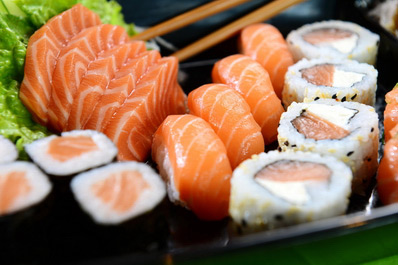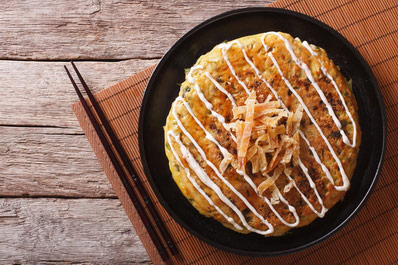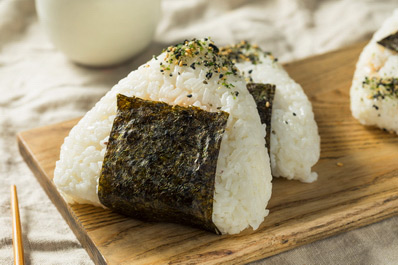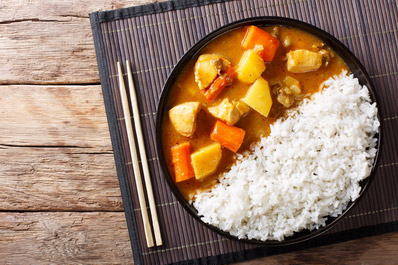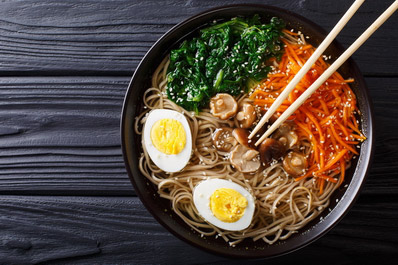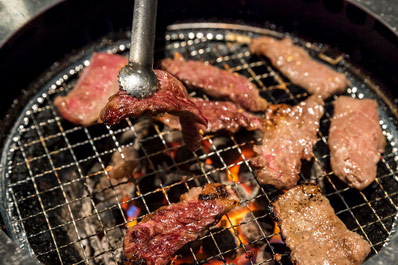A famous American filmmaker, Roman Coppola, once said of Japan: "Japan is the most intoxicating place for me. The Japanese culture fascinates me: the food, the dress, the manners, and the traditions. It's the travel experience that moved me the most." Thousands of travellers share similar sentiments after visiting Japan for the first time, the easternmost country on the ancient Silk Road. But what makes Japan unique? What is it about this Land of the Rising Sun that attracts people?
This Japan Travel Guide 2025 covers everything travellers for tourism purposes and business visitors need to know to plan their trip to Japan (日本, Nihon) — from the best time to visit and recommended itineraries to essential Japan travel tips and visa requirements. Whether you are a first-time visitor or a returning traveller, you can embark on a journey to the prime destinations in Japan and create enduring memories.
Your Guide to Japan
Contents
Is Japan Worth Visiting?
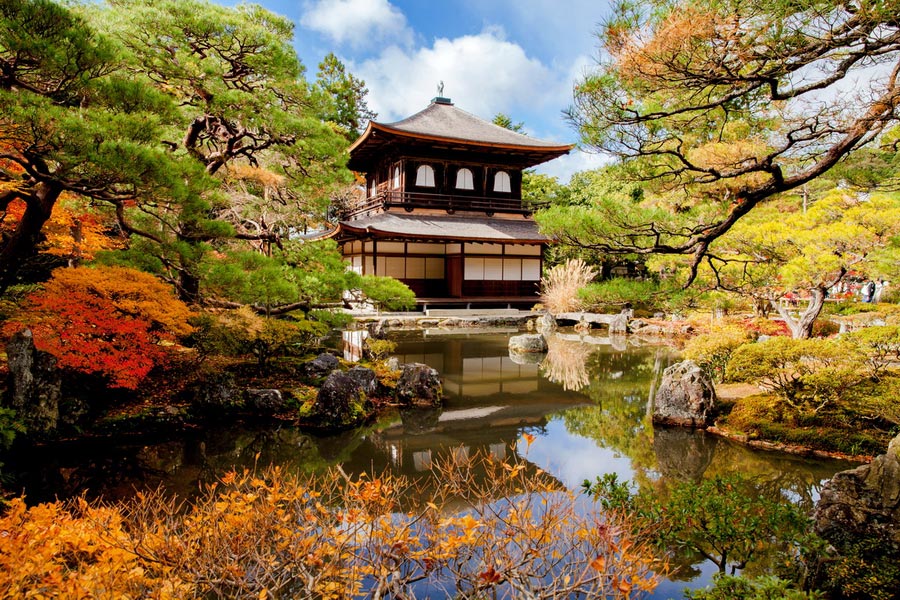
Japan is a mesmerising fusion of ancient customs and modern innovations. With almost 37 million visitors in 2024, it remains one of the world’s top travel destinations. Here is why:
- Exclusive Culture & History. Japan’s geographic isolation has fostered its distinct culture, preserving traditions for centuries. The country’s deep-rooted etiquette, bowing, and meticulous hospitality add to the distinctive allure. Japan’s thrilling past is witnessed through its 26 UNESCO World Heritage Sites and its 23 elements on the UNESCO List of Intangible Cultural Heritage.
- Religion & Spirituality. Centuries of profound spiritual heritage are reflected in countless temples and shrines in Japan. A transformative journey of faith and tradition awaits anyone who will undertake revered pilgrimage routes such as the Shikoku or Sakoku trails.
- Nature & Seasons. Forests cover 70% of the country, and destinations such as Mount Fuji and the Arashiyama Bamboo Grove highlight nature’s magnetism. The varied climate ensures year-round things to do, from Hokkaido’s snowy slopes to Okinawa’s tropical beaches.
- World-renowned Cuisine. Japanese cuisine is an art form. Sushi, maki, sashimi, ramen, and seasonal delicacies reveal the nation’s appreciation for fresh, high-quality ingredients.
- Modern Wonders and Futuristic Tech Innovation. Japan’s ability to utilise old with new is evident in its bustling cities. Tokyo (東京都) and Osaka (大阪市) demonstrate advanced technology, neon-lit streets, and convenient bullet trains, making travel seamless.
- Compact, Efficient, and Welcoming. Although limited in space, Japan excels in efficiency, from capsule hotels to tranquil gardens. The country’s hospitality ensures that every visitor feels welcome. Its unparalleled beauty and futuristic cities promise an indelible sojourn. Whether for nature, culture, cuisine, shopping or business it is a destination that captivates all who visit it.
Your Dream Holiday to Tokyo, Osaka, and Kyoto
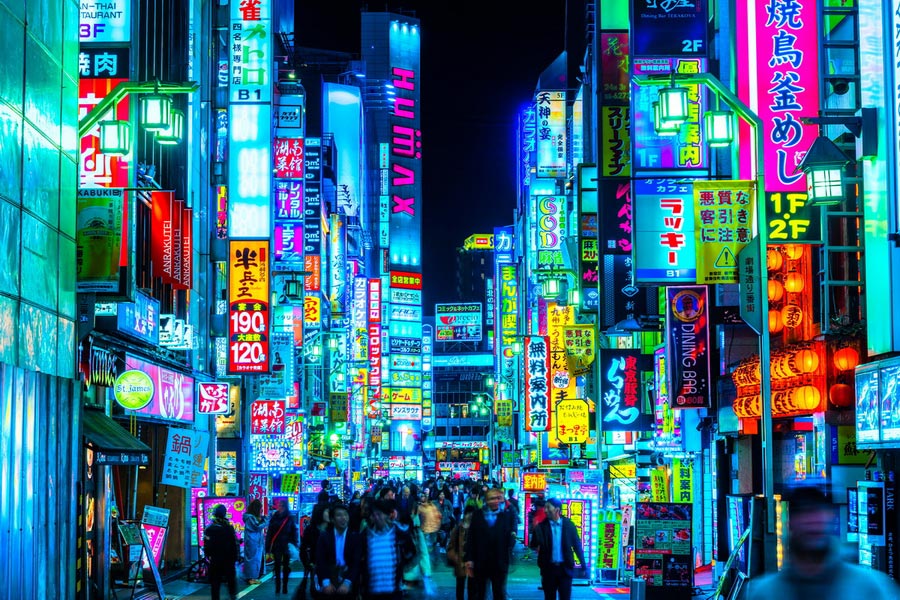
Everybody has a place they dream of visiting at least once in their lifetime, and for many, that place is Japan. Imagine Tokyo, a bustling metropolis that melds history and ultramodern technology. Those looking to take in stunning natural landscapes can visit the Japanese Alps or hike the famous Mt. Fuji (富士山, Fujisan).
Furthermore, Japan is home to serene Buddhist temples and sacred Shinto shrines, surrounded by well-landscaped parks encompassing cascading waterfalls, lush greenery, wondrous walking paths, and outdoor spaces for children. Moreover, as previously mentioned, the country prides itself on an unusual culture, exquisite cuisine, and stunning traditional architecture.
Fans of Japanese pop culture can explore anime and manga locations, such as the Ghibli Museum (Mitaka no Mori Jiburi Bijutsukan) in Tokyo, or visit Akihabara, the mecca of otaku culture. Meanwhile, history enthusiasts can learn about samurai, Japan’s legendary warriors. For those wanting to embrace Japanese tradition, buying a kimono and strolling through Kyoto (京都市)’s historic streets or attending a tea ceremony is an unmissable experience. Japan even has amazing beaches and ski resorts that will enthral anyone.
Your dream holiday awaits. Now is the perfect time to start planning a journey to the Land of the Rising Sun to discover its rich heritage.
Top Historical Experiences:
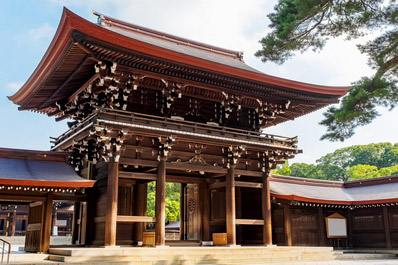
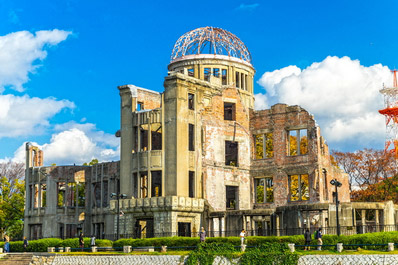
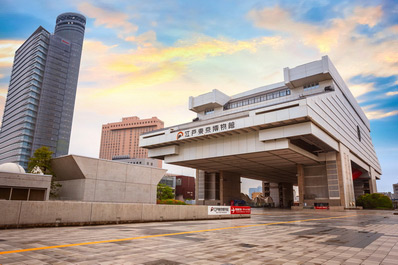
Top Cultural Experiences:
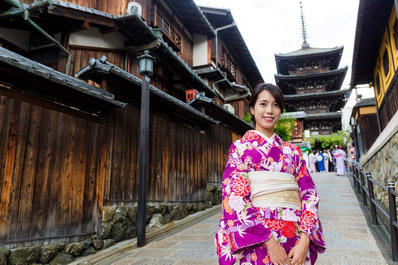
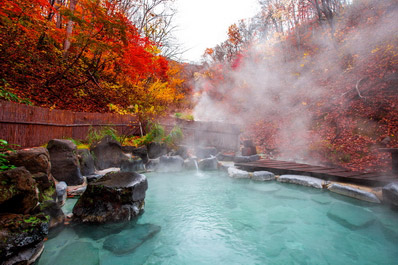
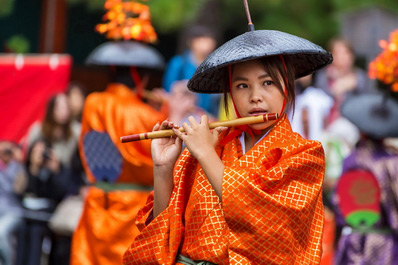
Top Outdoor Experiences:
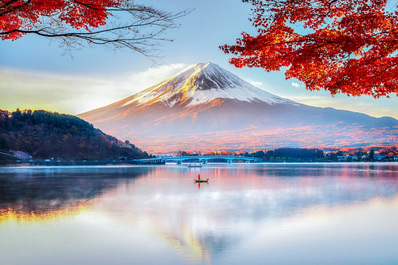
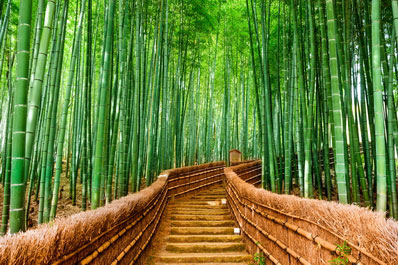
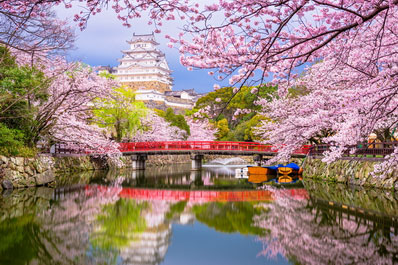
Do You Need a Visa to Visit Japan?
Japan visa requirements in 2025 vary by nationality. Citizens of 67 countries, such as the United States, Canada, Argentina, and most European nations, can enjoy visa-free travel to Japan for up to 90 days for tourism or business. However, travellers from other countries must obtain a visa in advance. To streamline the process, Japan introduced an e-visa in 2022 for nationals of the United States, Canada, Australia, Cambodia, Saudi Arabia, Singapore, South Africa, Taiwan, and the United Kingdom.
For those requiring a Japan tourism visa, applications can be submitted at the nearest Japanese embassy or consulate. The processing time typically ranges from 5 to 10 business days.
Is It Safe to Travel to Japan?
Japan, widely recognised as one of the safest destinations in the world with low crime rates and a welcoming atmosphere, is an excellent choice for solo travellers, including women. While petty crimes such as pickpocketing and purse snatching are rare, travellers are encouraged to take the usual precautions, notably in Tokyo’s Kabukicho, Roppongi, Harajuku, and Shibuya nightlife districts.
In the unlikely event of a crime, assistance is available from the local police or the Japan Visitor Hotline (050-3816-2787).
Additionally, foreign visitors can stay informed about any major unexpected event by downloading the multilingual emergency J-ALERT Notification App and following the guidance of Japanese authorities.
Thanks to efficient public transportation, safe streets, and strong emergency response systems, Japan is a fantastic country for those seeking adventure and peace of mind.
Where to Stay in Japan?
Whether you are travelling for business or leisure, Japan renders a range of lodging experiences, catering to different preferences and budgets. The sought-after choices are Western-style hotels, featuring family amenities and business facilities, and Japanese-style inns (ryokans) that have traditional tatami flooring, futon bedding, and exquisite local meals. Something truly futuristic can be witnessed at high-tech capsule hotels and their compact sleeping pods equipped with modern conveniences, while the intriguing robot hotels are staffed largely by state-of-the-art robots, creating the atmosphere of comfort and innovation.
Best Time to Travel to Japan
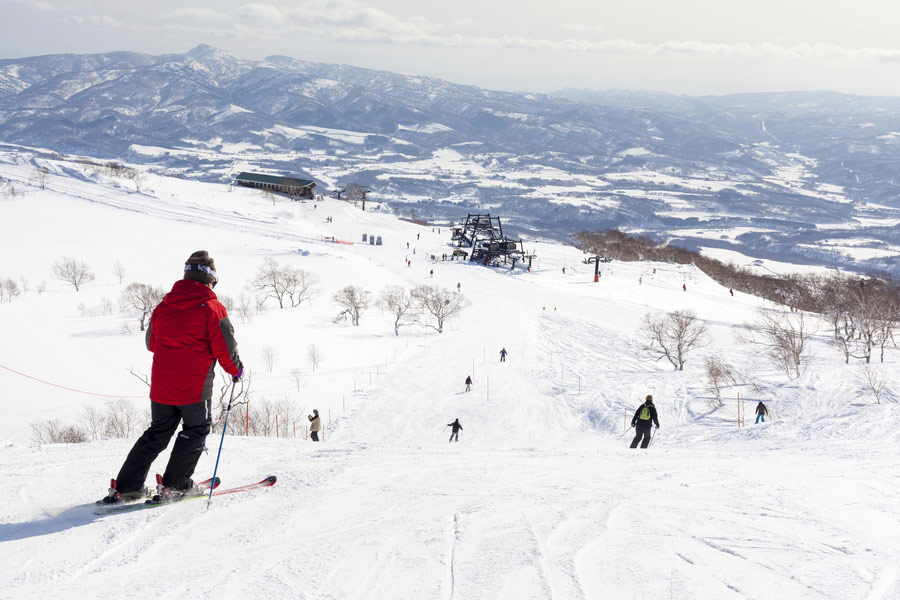
The best seasons to visit Japan are spring and autumn, typically from March to April and September to November.
- High Season: Mid-March to Mid-May & September to Mid-November
Best for cherry blossom season 2025, mild weather, and lovely parks - Shoulder Season: Late May to August and late November to December
June to August is great for hiking in the Japanese Alps and heading to Okinawa's tropical beaches.
September to November is ideal for fall foliage trips in Kyoto, Nikko, and Nara. - Low Season: January to Early March
Perfect for Japan ski resorts in Hokkaido and visiting Mt. Fuji in December when the skies are clearest.
Still, the best time to visit Japan depends on your specific Japan travel itinerary. The country spans eight regions, each displaying remarkable landmarks and attractions. Many visitors choose to tour Japan during the spring and fall seasons.
Temperatures from April to May are very mild and, therefore, perfect for sightseeing.
The weather temperature significantly drops in winter, making spots less crowded. Winter holiday enthusiasts should consider a Japan trip from November to March.
Visit Kyoto and Osaka during the Sakura Period
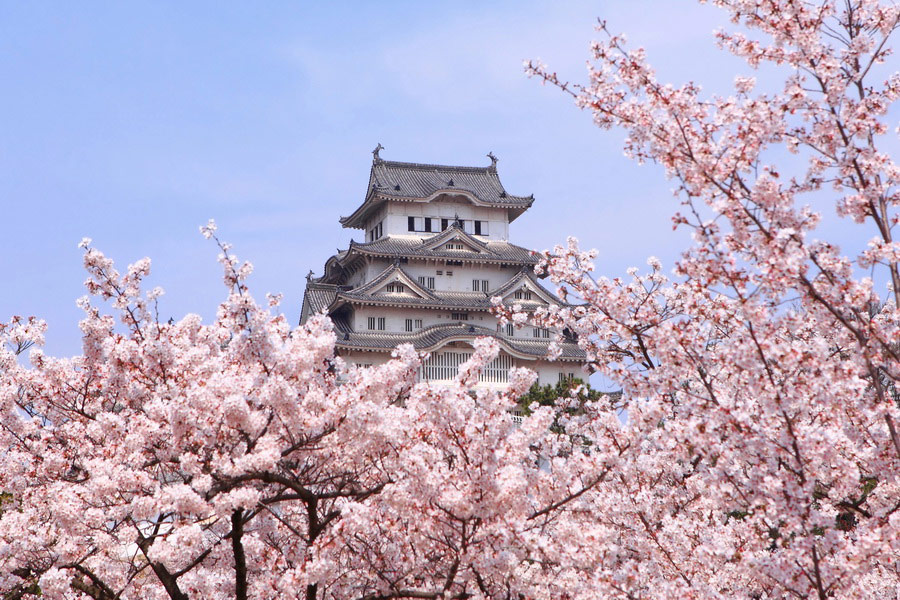
Cherry blossoms (桜, sakura) in Japan symbolise renewal and hope, deeply connected to the tradition of hanami — appreciating picnics under blooming trees. Sakura trees generally blossom between late March and early April, though weather can cause slight variations each year.
Visit Hokkaido in Winter
Japan’s 500+ ski resorts range from small local slopes to world-class destinations. Hokkaido, Furano, Sahoro, and Niseko are the luxurious ski resorts, with Niseko’s United All Mountain Pass at ¥10,500 per day. Peak ski season falls between Christmas and New Year, and powder lasts into mid-February. Spring skiing (March - early April) brings lower prices, while Chinese New Year remains the busiest and most expensive period.
Visit Mt. Fuji in December
Mount Fuji, Japan’s highest mountain, is famed for its stunning landscapes—best enjoyed in winter. In December, nearby Fujinomiya, sees about 75% clear skies, the optimal time to admire this iconic peak.
Best Way to Get Around
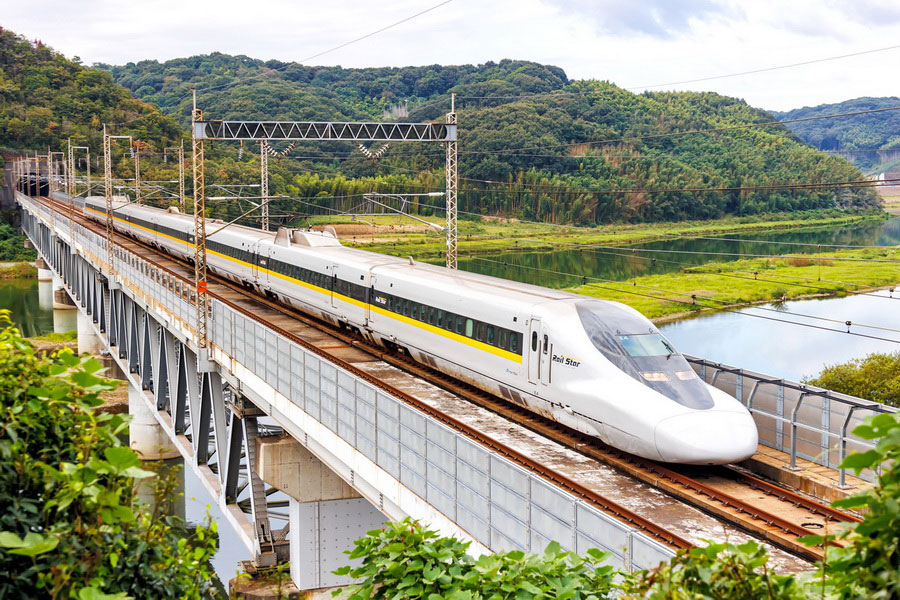
Upon arriving at Tokyo-Narita International Airport (NRT) or Tokyo-Haneda Airport (HND), travellers can travel around Japan by plane, train, bus, or ferry.
A direct international flight to Kansai International Airport (KIX) will take foreign visitors to the western districts of Japan, such as Kyoto, Osaka, Nara (奈良市), and Wakayama (和歌山市).
Domestic Flights
Travelling by plane is the best way to span Japan’s vast distances in a short time. Multiple domestic carriers—for instance, J-Air, Jetstar Japan, Spring Airlines Japan, Peach Aviation, and All Nippon Airways—fly to islands and many regional cities, making it easy to access Japan’s iconic destinations. The competition among these airlines often leads to excellent deals, especially if you book your tickets in advance.
Trains
Travelling by train is the best way to sightsee Japan. The country’s extensive rail network easily connects bustling cities, picturesque countryside, and cultural landmarks.
Travel freely in Japan with the Japan Rail Pass (JR). The legendary Shinkansen (bullet train) presents themed services like the Hello Kitty train; the HIGH RAIL 1375 allows newcomers to soak in awe-inspiring mountain views. Visitors who seek opulent experiences will appreciate first-class rail lavish interiors and panoramic landscapes on board the train suite Twilight Express Mizukaze and Shiki-Shima, as well as the Royal Express and the Seven Stars Kyushu, one of the most luxurious sleeper trains in the world, while the 36+3 luxury train operates during the day. The Spacia X is designed to seduce travellers who would enjoy a futuristic journey. The Tohoku Emotion and the Aru Ressha will fulfil gourmets.
Buses
While trains are the primary transportation in Japan, buses are an excellent alternative for getting around cities. Short-distance buses are a convenient way to reach destinations not directly accessible by train. Rechargeable cards, such as Suica, Pasmo Passport, and Kansai One Pass, allow for easy payment on buses, subways, and even some shops. Travellers in Kyushu can benefit from the SUNQ Pass; the Chubu region can be traversed with the Shoryudo Bus Pass. Most cities also have efficient and well-maintained subway systems.
Willer Express is the largest provider of intercity bus services in Japan. It sells bus passes for 3, 5, or 7 days, valid for two months. Japan Railway (JR) runs a large fleet of buses. Depending on the Japan travel itinerary, JR can be the only available option.
How to Travel in Japan by Car & RV
Japanese love the open road. Travelling by motorbike, car, truck, or recreational vehicle (RV) is a great way to unveil the country’s versatility.
Adrenaline-seeking automotive enthusiasts can book a luxury supercar driving experience across the streets of Shibuya (the busiest zebra crossing) or the Hakone Mountain. The exhilarating adventure subsumes a brand-new Rolls Royce, Ferrari, and Lamborghini.
Visitors planning on driving in Japan must obtain an International Driving Permit (IDP) and always keep it and their national license with them.
Car rental companies are found at Narita Airport and in most cities. These are Nissan Rent-A-Car, Times Car Rental, Nippon Rental, NICONICO Rental, Toyota, Budget, and Hertz. For RV travel, visit Japan RV Rental.
Tokyo Supercars company allows for renting luxury and sports cars, as well as experimenting with circuit drifting or grid driving and combining sports car renting with yacht or helicopter rides. Helpful information about traffic conditions can always be sourced from Google Maps.
Taxis
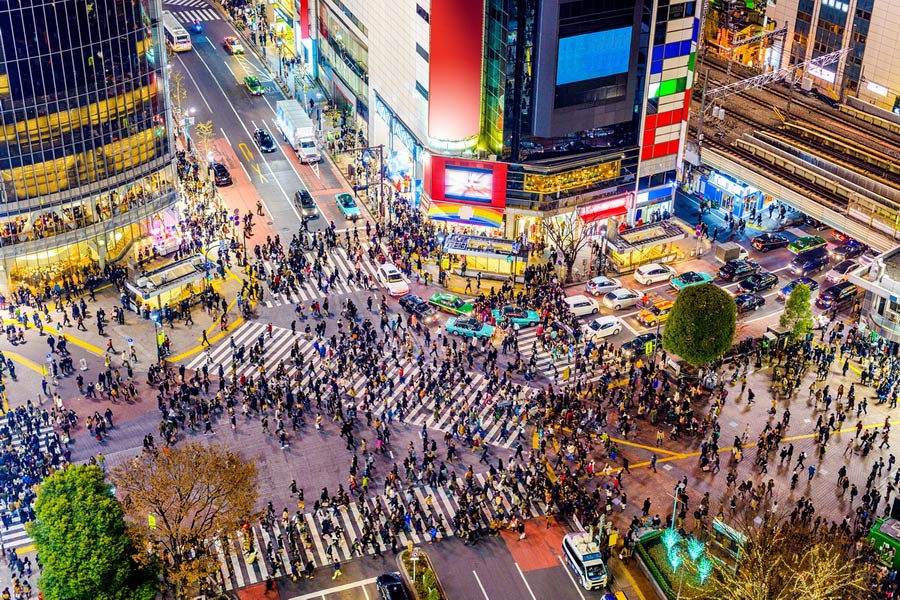
Taxis in Japan are increasingly comfortable, clean, and reliable, making them a great option for door-to-door service. Despite that, they are also more expensive than a metro ticket. Consequently, locals often use them only for short distances to avoid high meter charges. The initial fare for a standard-size taxi in Tokyo’s 23 wards starts at 500 yen for the first 1.096 km, with an additional 100 yen charged for every 255 meters travelled (see Tokyo Hire-Taxi Association).
Taking a taxi late at night, from 10 p.m. to 5 a.m., comes with a 20% fare increase. While taxis may not be the most budget-friendly option, they can be a lifesaver when carrying heavy luggage, reaching destinations not easily accessible by public transport, or traveling late at night when train and bus services are limited.
Ferries
Given several thousand small islands and Japan’s four main islands (Honshu, Kyūshū, Hokkaido, and Shikoku), ferries play a big part in Japanese life.
Long-distance ferries can be 2nd class, 1st class, or special class. The main Japan ferry companies are Shin Nihonkai Ferry, Taiheiyo Ferry, MOL Ferry, Ocean Trans, Miyazaki Car Ferry, Meimon Taiyo Ferry, Hankyu Ferry, MOL Sunflower, and Tokyo Kyushu Ferry.
The ticket purchase is available through the company via phone, online, or at the ferry terminal.
Private Helicopters
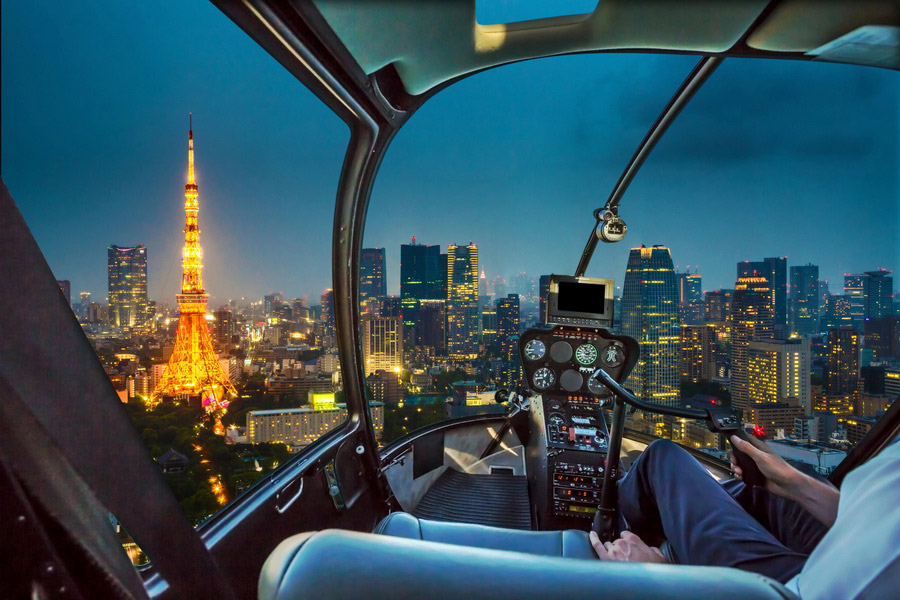
Business travellers may choose to hire a helicopter that can land almost anywhere deemed safe by the pilot. These can be rooftop hotels, conference centres, or a remote island in Japan. Moreover, a private helicopter tour is an excellent opportunity to see Japan up close and personal.
Cycling in Japan
Cycling is a viable and enjoyable option to get around Japanese cities. Japan has promoted the cycling tourism industry via six picturesque routes that highlight the country’s natural diversity. Bike rentals are widely available in every city, at major touristic attractions, near train stations, and even at some youth hostels. Bicycle lanes are rare; cyclists are legally required to ride on the road and always stay aware of traffic. Additionally, Japan follows left-side driving rules, which likewise apply to cyclists.
Electric Scooters
Riding e-scooters in Japan is another popular and eco-friendly way to navigate city streets, but it comes with strict regulations. Riders must be at least 16 years old, and helmets are recommended, though not always mandatory. Rental services are available in major cities. E-scooters are allowed on roads but not on sidewalks, and traffic rules must be followed.
Hiking in Japan
Japan’s varied scenery makes it a hiker’s mecca. One standout adventure is the Kumano Kodo (熊野古道), a network of UNESCO-listed sacred pilgrimage routes weaving through the lush southern Kansai region. Recently spotlighted in a news article by the British newspaper, The Independent, the Kumano Kodo trail invites trekkers to embrace history while walking between time-honoured shrines and adorable inns.
Best Japan Travel Apps
The best apps to download are Google Maps for navigation, Japan Travel by NAVITIME for detailed train routes and timetables, and the Shinkansen smartEX App by Central Japan Railway Company to purchase tickets and for precise Shinkansen and Japan Transit Planner — Norikae Annai for railway and aeroplane planning. Suica or PASMO apps manage an IC card for public transport and shopping, while Yomiwa or Google Translate help with language barriers. For food lovers, Tabelog lists restaurant reviews, and GURUNAVI helps find local dining options, while the Michelin Guide App connects you with the elite Japanese restaurants and hotels. The multilingual emergency J-ALERT Notification App allows you to be informed of any major security event. Lastly, the Japan Official Travel App by JNTO provides essential travel tips, event updates, and safety information.
How Many Days Do You Need in Japan
A minimum of two weeks is perfect for visiting major landmarks of Japan. However, the ideal length of your trip to Japan will depend on what you want to see and your budget.
Best of Japan for First-Time Travellers
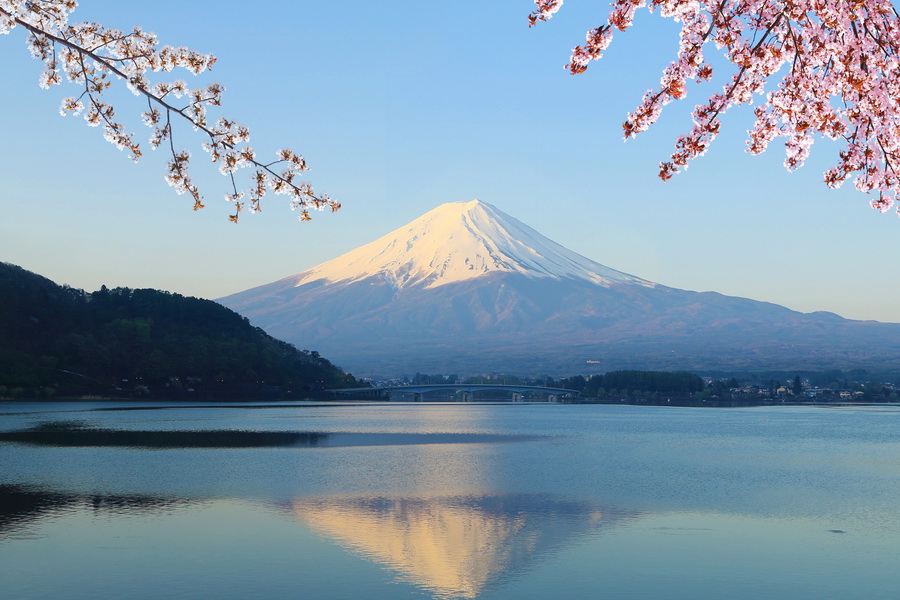
Here are a few examples to give travellers an idea of what the Japan travel packages can contain on a 1- to 3-day Japan tour, a 4- to 6-day tour, a 7- to 13-day travel package, or a 14- to 21-day trip.
Japan Travel Itineraries
- 1 to 3 Days City Tours
Tokyo: Best for the first-time visitors. Japan’s capital renders a striking insight into the ultra-modern lifestyle of the Japanese thanks to the city’s technological advancements. Yet Tokyo also vaunts historical sites where one can feel the flow of time and travel through the ages.
Places to visit: Shibuya Crossing, Sensō-ji Temple, Samurai Ninja Museum, Omoide Yokocho, Shinjuku Gyoen National Garden, Imperial Palace, Tokyo Station Area for Food Sampling, Ginza and Tsukiji Fish Market, Akihabara Anime and Manga Universe, Odaiba Manmade Island, Tokyo Disneyland, Kirby Café. - 4 to 6 Days in Japan
Combine Tokyo and Kyoto Travel—Those who can spend more days in Japan can combine Tokyo and Kyoto in their tour.
Places to visit: Kyoto Station, Nijō Castle, Nishiki Market, Fushimi Inari Taisha Shrine, Ginkaku-ji Temple, Gion District for geisha experience, Kiyomizu-dera Temple, Yasaka Pagoda, Japanese gardens: Kennin-ji, Kodai-ji, Shosei-en - 7 to 13 Days in Japan
Tokyo, Hakone, and Kyoto—A complete Japan travel route that takes visitors to the enchanting excursion in Tokyo, followed by awe-inspiring Mount Fuji and Lake Kawaguchiko, Kyoto, Nara, and Hakone’s hallmarks.
Places to visit: Osaka, Nikko, Hakone, Mt. Fuji, Kyoto, Nara, Miyajima, Kanazawa, Hiroshima, Takayama - 14 to 21 Days in Japan
Tokyo, Hokkaido, and lower Honshu—Spend one week in Tokyo, one week in Hokkaido, and one week in the lower part of Honshu.
Places to visit: Tokyo (4 days), Sapporo (2 days), Asahikawa (1 day), Asahidake Onsen and Daisetsuzan National Park (2 days), Kyoto (3 days), Osaka (2 days), Hiroshima (2 days), Nagoya (2 days), Lake Kawagushiko (2 days), Tokyo (1 day).
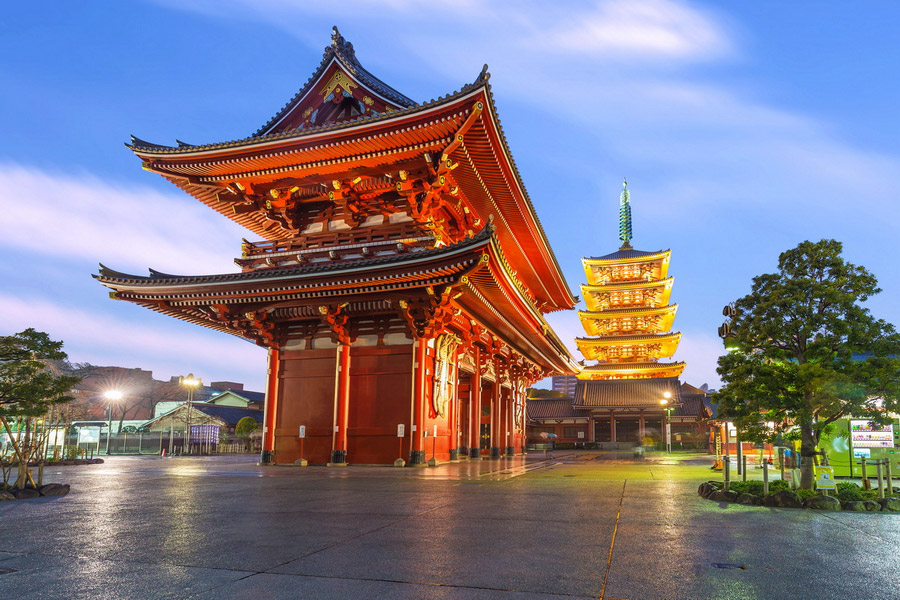
Treat Yourself to a Private Luxury Tour in Japan
A private luxury tour will elevate every moment of a high-profile business trip. For instance, a stylish ride aboard Japan’s Premier Luxury Sleeper Train or in a helicopter for sweeping panoramic views. Business visitors can stay in world-class hotels where personalised service and elite amenities satiate their every need; they can anticipate the senses-awakening gourmet dinner at the Michelin-starred restaurant in Tokyo, Kyoto, or Osaka.
Visitors can amplify the appeal of their shopping spree by hiring a personal shopper to enjoy the thrill of shopping in the high-end boutiques or unwind on a luxury cruise with top-tier shows. For added adventure, they may rent a high-end vehicle or schedule a golf day at a championship golf course. Every detail can be arranged in a way that contributes to comfort and elegance, ensuring an unforgettable tailor-made journey.
Must-Visit 14 Prefectures in Japan
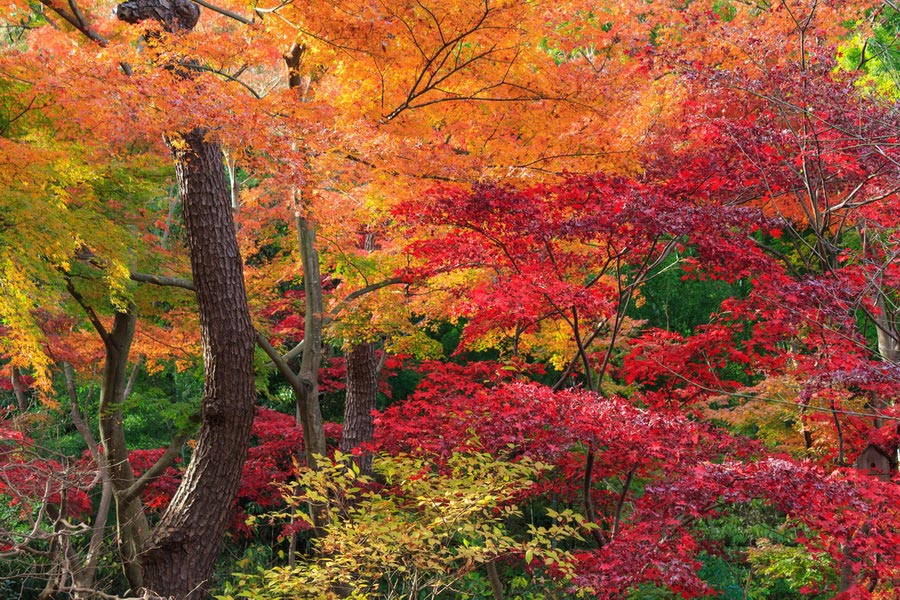
Chiba, Fukuoka, Kanagawa, Nara, and the other ten destinations are always the most-mentioned names by Western citizens and their preferred ones when it comes to the most-visited prefectures of Japan.
From Chiba — home of two Disney parks — and Aichi — headquarters of Toyota Motor Corporation—to the Kamakura sacred temples of Kanagawa and renowned scarves of Yokohama, Japan’s most visited prefectures draw thousands of visitors each year.
Yamanashi’s fruit orchards, Shizuoka’s hot springs and beaches, and Nagano’s historic Matsumoto Castle and Lake Suwa boast scenic charm, while bowing deer at Nara Park hypnotise visitors, and Mt. Haku, one of Japan’s three holy peaks, catches the eye in Ishikawa. Hiroshima’s Memorial is a testament of peace, and Gifu preserves a glimpse of old Japan through its untouched fishing villages.
Winter sports thrive on Hokkaido’s snowy slopes, and Hyogo claims one of the country’s oldest hot springs at Arima Onsen. Finally, Tochigi delights as the “strawberry kingdom,” and Fukuoka tempts taste connoisseurs with its celebrated gourmet repertoire.
What Things to Do in Japan?
- Visit the Expo 2025 Osaka for a glimpse into future innovations and global showcases.
- Try a bento box to enjoy a portable meal bursting with local flavours.
- Have a walk in shopping districts and find out about the latest trends in fashion and souvenirs.
- Bathe in onsen to experience Japan’s soothing hot spring culture.
- Visit museums and shop in galleries for an engaging mix of art, history, and creative treasures.
- Discover the culture and history of Japan to gain deeper insights into its enduring traditions.
- Nature and wildlife sightseeing, from stargazing in Hokkaido and Samurai falconry in Kanazawa to finding rare birds in Okinawa to TAO-no-Oka open-air theatre in Aso Kuju National Park.
- Enjoy sustainable tourism to support local communities and preserve Japan’s natural beauty.
- Experience the Japanese lifestyle by staying in a traditional Japanese house.
- Have a good time in theme parks where world-class rides and recreational activities await.
- Practice golf on any of Japan’s 2,308 golf courses, many set in spectacular locations.
- Catch up with the new high-tech trends and discover why Japan leads in cutting-edge innovation.
Holidays and Festivals in Japan
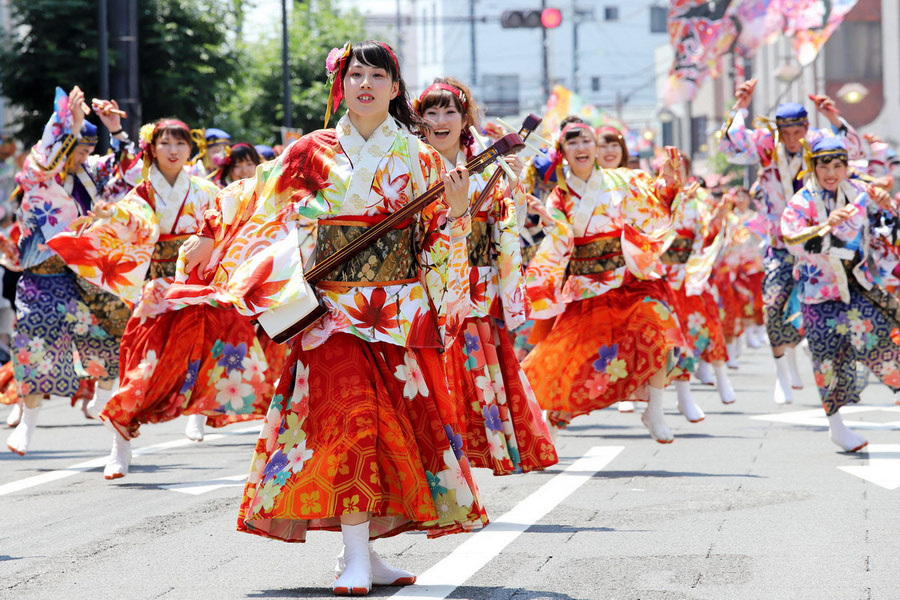
Japan's annual festivals (matsuri) are an integral part of the country. When visiting a city or town during a cultural fête, visitors can interact with a local tradition first-hand and fill their memories with colour, music, and joy.
Sapporo Snow Festival (Sapporo Yuki Matsuri)
Like most snow festivals in other countries, the Sapporo Snow Festival (さっぽろ雪まつり) is an exhibition of massive snow and ice sculptures held in Odori Park at the beginning of February. Every year, 2 million visitors attend the celebration. Local and international artists come together to build intricate masterpieces, which are glowing magnificently after dark.
Omizutori (Fire and Water Festival)
The Japanese “Omizutory” (お水取り) refers to the final service in a two-week-long ceremony called Shuni-e. It takes place in the famous Tōdai-ji, Nara, from the 1st to the 14th of March. This ancient rite focuses on water’s power to purify people of their sins and welcome spring. The most impressive spectacle occurs at Nigatsudō Hall, where giant torches are set alight, creating a fantastic display.
Gion Festival
The Gion Matsuri (祇園祭) has a history of more than a thousand years. It is a matsuri tied to the Yasaka Shrine in Kyoto. The festival runs from the 1stst to the 31stst July, and various events occur throughout the month. The biggest one is the Yamaboko Junko, a grand parade exhibiting festival floats (yamoboko), which takes place on the 17th of July.Aomori Nebuta FestivalAomori Nebuta Matsuri (青森ねぶた祭) is so widespread that almost eight million people attend the festival in the city of Aomori annually in early August. One of the festival’s traditions allows anyone to purchase or rent costumes to become a haneto (ハネト) to join dancers—as long as they follow the rules.
Awa Odori
The Awa Odori ((阿波踊り) dance festival is Tokushima’s traditional dance celebration with a history of over 400 years. Although held across Japan, the most authentic festival can be enjoyed in Tokushima.Fuji Rock Festival (Fuji Rokku Fesutibaru)
Fuji Rock Festival (フジロックフェスティバル) is among the well-known music festivals in Japan and the world. It has been celebrated over three days every July since 1997 at Naeba Ski Resort. The event attracts around 150,000 people each year. Since it is the place to be, we recommend booking accommodation and festival tickets in advance.MICE in Japan
Japan consistently ranks as a top MICE (Meetings, Incentives, Conferences, and Exhibitions) destination thanks to its high degree of internationalisation and robust infrastructure. Business travellers and event organisers can attend major exhibitions such as the annual Tokyo Auto Salon, which draws a global audience and returns on January 21-23, 2026, following the completion of its 2025 edition. Meanwhile, the highly anticipated Expo 2025 Osaka—running from April 13 to October 13, 2025—will accentuate Japan’s innovative spirit on the world stage. For even more industry-specific fairs and events, the Japan External Trade Organization (JETRO) website contains a comprehensive directory sorted by city and sector, underscoring Japan’s role as a global hub for business gatherings.
What to Eat in Japan?
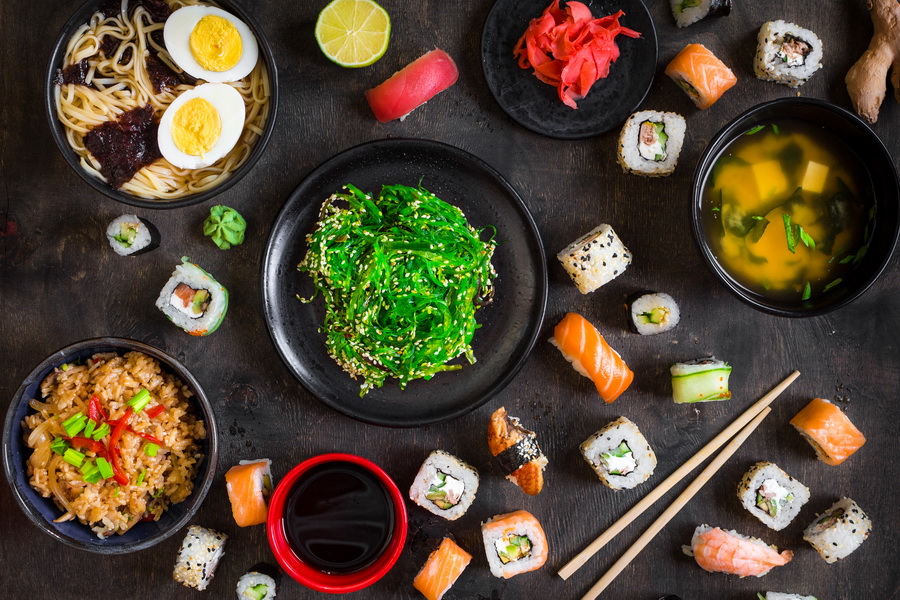
The authentic Japanese gastronomic realm, renowned for its impressive variety, typically involves rice, miso soup, and an array of side dishes. The government divides the country into eight regions and 47 prefectures, each touted for their traditional dishes and peculiar flavours. For example, a must-try dish in Hokkaido is the sea urchin (uni). Japanese ramen has become very well-known worldwide, but it's only in Japan that visitors can indulge in the full spectrum of ramen varieties.
For the Japanese, dining is an indispensable part of social and business relationships. When going out with friends or colleagues, the first activity is often sharing a meal, as eating together is a cherished custom that stre
So, what should visitors to the land of the Rising Sun try? Here’s the list of the most favourite meals to taste in Japan.
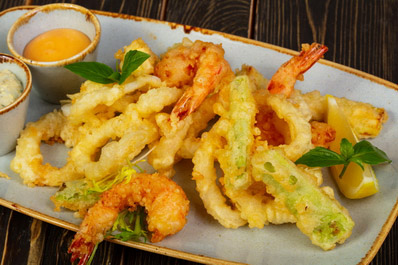
Tempura consists of lightly fried seafood or vegetables, often served with a savory dipping sauce, rice, and miso soup.
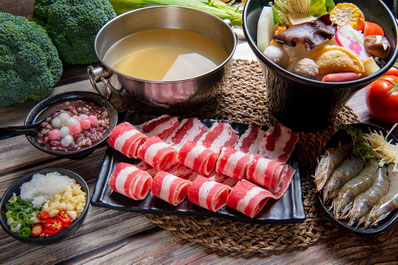
Shabu-Shabu offers diners the chance to cook thinly sliced beef and fresh vegetables in a hot pot right at their table.
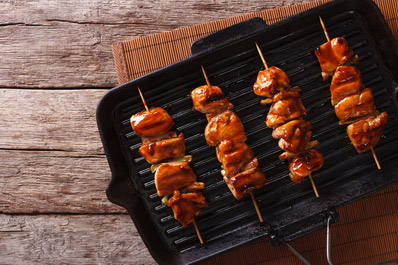
Yakitori, grilled chicken skewers, may also include chicken liver and heart, offering a perfect snack any time of the day.
Japanese Vegetarian Cuisine
According to 2019 statistics provided by the Japan Vegetarian Society, only 9% of Japanese people identify as vegetarians, but thanks to the country’s deep appreciation for natural foods and the influence of tourism, vegan and vegetarian dining options are steadily increasing. That said, the safest choice for those avoiding meat in any form is to dine at a dedicated vegetarian or vegan restaurant.
Many traditional restaurants in Japan may not fully understand the concept of “vegan” or “vegetarian.” For example, if you order noodles, there’s a chance they could be cooked in fish-based broth or contain hidden seafood seasonings. Language barriers can also be challenging, as not all waiters will understand English dietary requests. To avoid misunderstandings, it’s helpful to carry a written Japanese phrase: "I do not eat meat or fish" (私は肉と魚を食べません) – Watashi wa niku to sakana wo tabemasen.
Below, we’ve compiled a list of the 10 best vegetarian and vegan restaurants in Tokyo, Kyoto, and Osaka, ensuring a delicious and worry-free dining experience.
2025 Michelin Guide Star Restaurants in Japan
375 Michelin Guide star restaurants across Japan offer special dining experiences. Among the 2025 ones in Tokyo, SEZANNE moved up from two-star status to the three-star tier. Tempura Motoyoshi earned two
Michelin Guide stars. 13 eateries earned a star for the first time, including Yama, a dessert spot, driven by the seasons; Sanosushi, a tuna sushi destination; and CYCLE by Mauro Colagreco, a fine dining French restaurant with Japanese twists.
In Kyoto, Sushi Hayashi has been recently promoted to a first star. Kyokaiseki Kichisen has two stars, and Hyotei retained its highly coveted three stars. The latter traces its origins back 400 years as a humble tea house.
New Michelin Guide star venues were introduced in Osaka. RiVi pulls both from Italy and France. Milpa draws inspiration from Mexican cuisine but uses Japanese ingredients and cooking methods. The texture and quality of the tempura are reasons enough to make a visit to Tempura Sakugetsu.
Japanese Sake
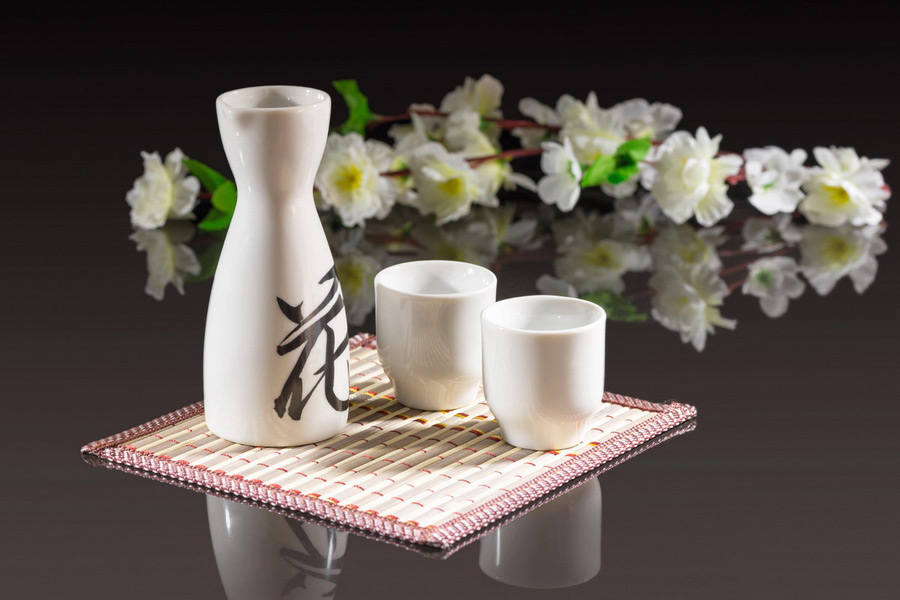
Sake(酒) or 日本酒, nihonshu) is a rice wine, a traditional Japanese alcoholic drink, that embodies the elegance of Japanese culture. Legally defined as “seishu” (清酒, clean sake), it refers to the filtered sake without sediment, leaving a clear drink.
Regardless of its classification, sake is a versatile beverage, served warm and cold. Before travelling to Japan, it helps to learn about at least two types of sake. Daiginjo is high-quality sake made solely from rice that excludes any additives, adhering to the 'pure rice' sake concept. It is considered top-grade and the best sake to buy in Japan, requiring the finest ingredients and precision during brewing. Futsushu, on the other hand, is the non-premium sake made from table rice, accounting for about 80% of the sake market.
Shopping in Japan
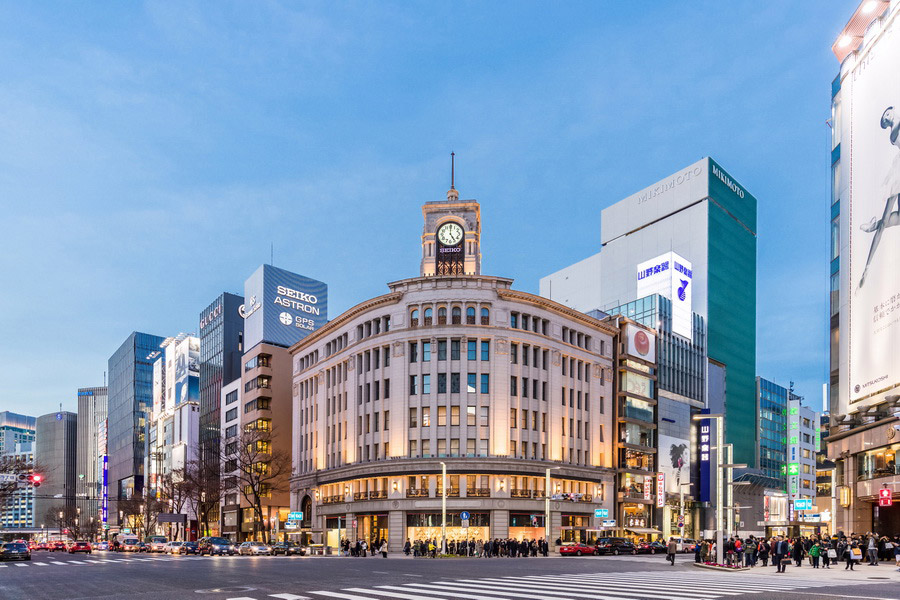
Japan’s haute couture stage is internationally acclaimed by the visionary work of Issey Miyake, Hanae Mori, and Kenzo Takada—established names that resonate worldwide for both their fashion lines and signature fragrances. Joining these industry icons is a vibrant new generation of designers (like Chitose Abe of Sacai and Mame Kurogouchi), who continue to redefine Japanese style for a global audience.
A favourite place of shopping for locals and international travellers is Ginza—Tokyo’s premier luxury district—where visitors can pore over everything from watches and jewellery to leather items, cosmetics, and electronic devices.
Dos and Don’ts of Etiquette in Japan
- Bow when greeting in Japan and learn about the different kinds of bows appropriate for various situations.
- Take off your shoes when entering a house.
- Use cloth or paper towels to wipe your hands before a meal.
- Ask permission before taking a photo of Japanese people in a kimono.
- Line up before getting on a train.
- Avoid talking on the phone while riding public transportation.
- Apologise even if it is not your fault. The Japanese often say “sumimasen” even when they have not done anything wrong.
- Say “itadakimasu" before eating and "gochisousama" after finishing the meal. The two phrases express gratitude towards food.
- Learn how to hold chopsticks when eating to show respect.
- Signal to a waiter or waitress in Japanese restaurants by gently raising your hand and saying "sumimasen" to catch their attention.
- Blow your nose in public.
- Interrupt a conversation.
- Be overly emotional.
- Be loud in public places such as parks, libraries, restaurants, and on roads.
- Use hand towels to wipe your face, mouth, or the table, as it's considered bad manners.
- Hesitate to hold the bowl in your hand when having miso soup or rice.
- Be embarrassed to make noises while eating soba, udon, or ramen. Slurping and sipping sounds are fine in Japan.
- Leave leftovers after having lunch or dinner.
- Follow Geisha or Maiko for selfies.
- Leave a tip or openly count your change, as these practices are uncommon in Japan.
Speak the Language: Essential Japanese Phrases for Travellers
Do you believe the Japanese won't understand your English? And for good reason! A few sources state that only 20%-30% of the Japanese speak some form of English. But with this small vocabulary list, you will be able to travel in Japan seamlessly!
| Phrase | Japanese Spelling | Latin Script |
| Top 10 Phrases | ||
| Good afternoon. | こんにちは | Konnichiwa |
| Sorry | すみません | Sumimasen |
| Where is...? | ...はどこですか。 | ...wa doko desuka? |
| How much is it? | これはいくらですか? | Kore wa ikura desuka? |
| Do you speak English? | 英語を話せますか? | Eigo wo hanase masuka? |
| Please, take me to... | ...に連れて行ってください。 | ...ni tsurete itte kudasai |
| Can I ask for your card, please? | 名刺をください | Meishi wo kudasai? |
| Does this train/bus go to...? | この電車/バスは...に行きますか? | Kono densha/bus wa... ni ikimasuka? |
| Could I have...? | ...をください。 | ...wo kudasai? |
| Thank you. | ありがとうございます。 | Arigatou gozaimasu |
| Basics and Greetings | ||
| Good afternoon. | こんにちは | Konnichiwa |
| Goodbye. | さようなら | Sayounara |
| Good morning. | おはようございます | Ohayou gozaimasu |
| Good evening. | こんばんは。 | Konbanwa |
| Good night. | おやすみ。 | Oyasumi |
| Yes | はい | Hai |
| No | いいえ | Iie |
| You are welcome. | どういたしまして。 | Dou itashi mashite |
| Thank you in advance. | よろしくお願いします。 | Yoroshiku onegai shimasu |
Did You Know That…
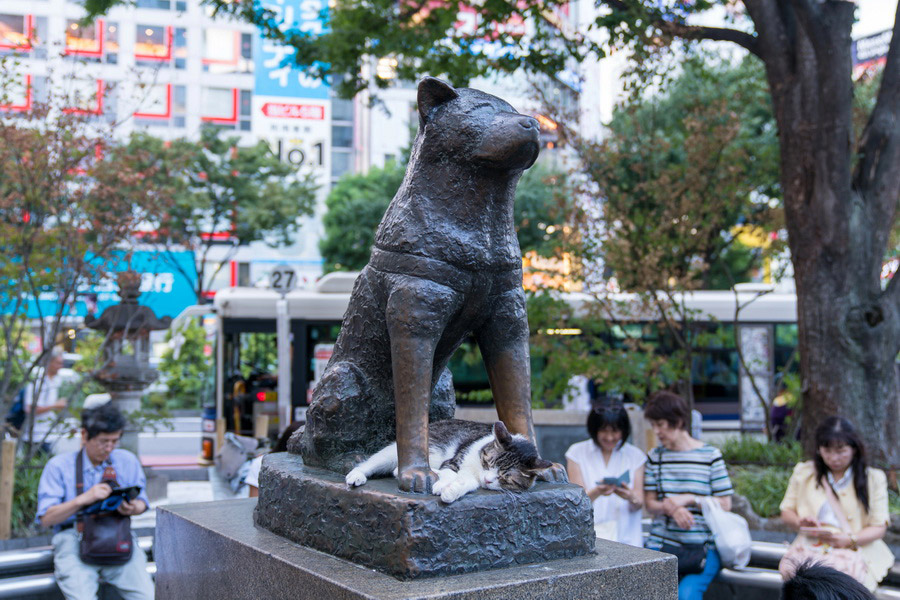
- When Prince Alfred, Duke of Edinburgh, visited Japan in 1869, he received a large Japanese-style dragon tattoo on his right arm.
- The oldest hotel in the world is in Japan. According to historical records, the Nishiyama Onsen Keiunkan in Ishikawa Prefecture opened in 705 AD. The same family has operated it for over 1,300 years, until 2017.
- The first subway line in Tokyo and Asia was the Ginza Line, which opened in 1927.
- Shinjuku Station in Tokyo, Japan, is the busiest station in the world, with over 3.6 million people passing through it daily.
- The longest wooden footbridge in the world, as listed by Guinness World Records, is the Horai Bridge in Shimada, Shizuoka Prefecture.
- Kagawa is the smallest prefecture in Japan by geographic area. The largest prefecture is Hokkaido.
- Japan is the country where men receive chocolate gifts from women on Valentine’s Day.
- Japanese restaurants serve water and towels (oshibori) to clean hands before eating, and it’s often free of charge.
- The Japanese workers often nap on the jobs and in public—they can take a little siesta on benches or subway platforms.
- Historically, Japanese women who blackened their teeth were considered beautiful. This practice, which lasted for over 1,800 years, can still be seen in Kabuki theatre during the onnagata show, where male actors paint their teeth and shave their eyebrows.
- Wabi-sabi is a word that expresses Japan’s sense of aesthetics. It denotes the elegance of withered or old things.
- Hadaka Matsuri is a festival held in Okayama, Japan, where thousands of nearly naked men wear only fundoshi (loincloths) to secure a good year. Nudity has been part of the Japanese culture for centuries; notably, bathing totally naked in onsen surrounded by strangers is a tradition.
- The Japanese avoid the number 4, as its pronunciation "shi" (四) sounds like the word for death (死), making it an unlucky number.
- Hachiko, the loyal Akita, waited at Shibuya Station every day for nearly 10 years after his owner passed away. His unwavering devotion inspired the movie Hachiko: A Dog’s Tale, based on this true story.



